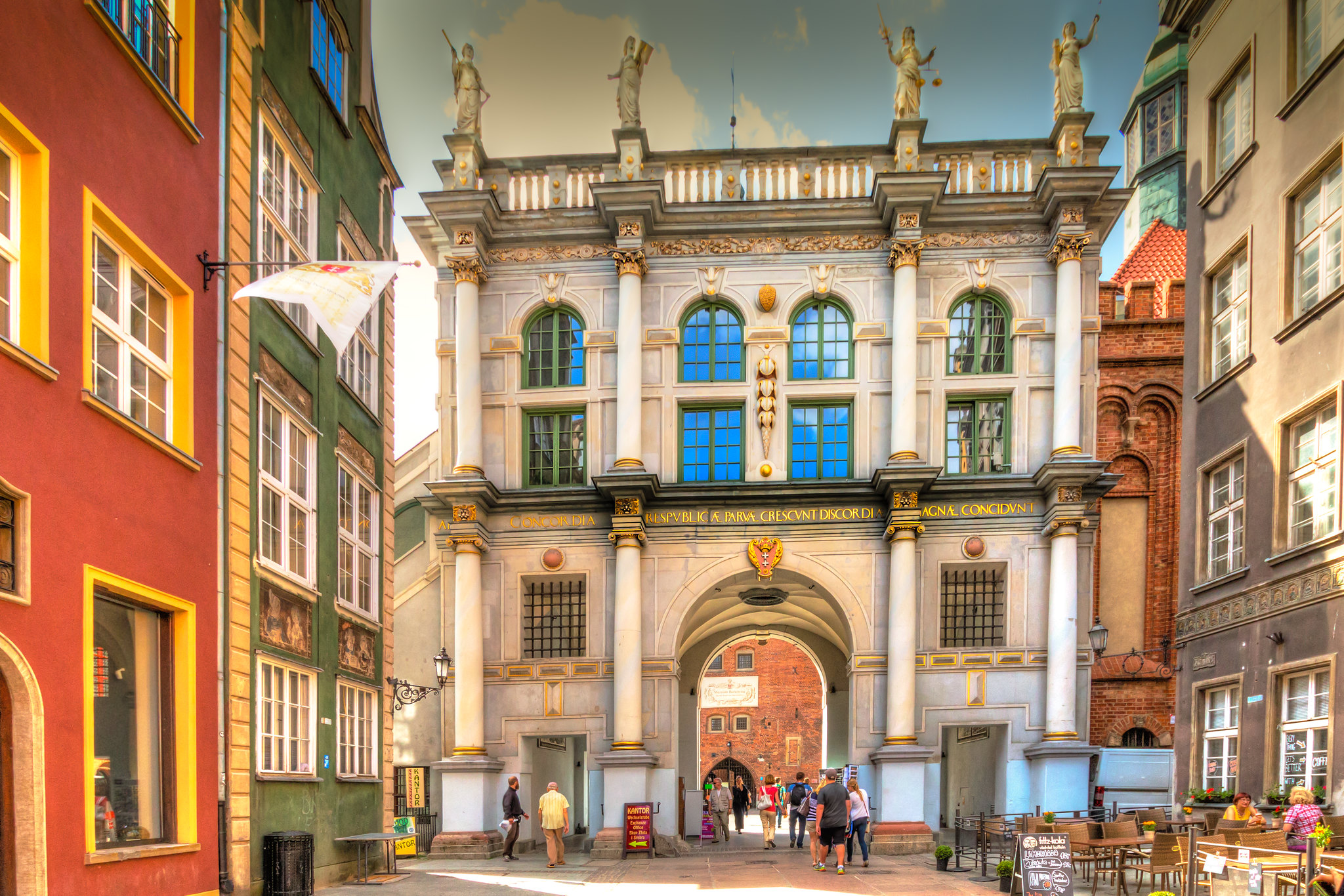Nestled in the heart of Gdansk, Poland, the Golden Gate stands as a testament to the city’s rich history and architectural splendor. This ornate Renaissance-style structure serves as a grand entrance to the Old Town, beckoning visitors to step back in time and explore the wonders that lie beyond. In this article, we’ll delve into the fascinating history, intricate design, and cultural significance of the Golden Gate, making it clear why this landmark is a must-visit attraction for any traveler to Gdansk.
The Golden Gate, known locally as “Złota Brama,” has witnessed centuries of Gdansk’s tumultuous history since its construction in 1614. Designed by Abraham van den Blocke, a renowned Dutch-Polish architect, the gate was built to replace an earlier Gothic structure that had stood at the western end of Dluga Street (Long Street) since the 13th century.
The gate’s creation coincided with Gdansk’s golden age as a wealthy Hanseatic League port city. It served not only as a defensive structure but also as a symbol of the city’s prosperity and architectural ambitions. The Golden Gate formed part of the city’s fortifications, along with the nearby Upland Gate and the no-longer-extant Fore Gate, creating an impressive sequence of entry points into the heart of Gdansk.
The Golden Gate’s design is a stunning example of Dutch Mannerist architecture, a style that flourished in Northern Europe during the late Renaissance period. Its facade is adorned with intricate stonework, showcasing the skill of 17th-century craftsmen. The gate features two levels, each with three arched passages, allowing both pedestrian and vehicle traffic to flow through.
What truly sets the Golden Gate apart is its elaborate decorative elements. The upper level is adorned with allegorical sculptures representing the virtues highly valued by Gdansk’s citizens: Peace, Freedom, Wealth, Fame, Concord, Justice, Piety, and Prudence. These statues, crafted by Piotr Ringering, serve as a visual representation of the city’s ideals and aspirations.
The gate’s name, “Golden,” is believed to have originated from the gilded elements that once adorned its facade. While the original gold leaf has long since disappeared, the gate’s grandeur remains undiminished, its honey-colored sandstone glowing warmly in the sunlight.
Like much of Gdansk, the Golden Gate has faced its share of challenges throughout history. It survived the Partitions of Poland and the turbulent years of the Free City of Danzig. However, during World War II, the gate suffered significant damage as Gdansk (then Danzig) was heavily bombed.
In the aftermath of the war, as part of the extensive reconstruction efforts in Gdansk’s historic center, the Golden Gate was painstakingly restored to its former glory. This restoration, completed in 1957, stands as a testament to the Polish people’s determination to preserve their cultural heritage in the face of adversity.
Today, the Golden Gate continues to serve its original purpose as the grand entrance to Gdansk’s Old Town. As visitors pass through its arches, they step onto the famous Royal Way, a route once taken by Polish monarchs during their visits to the city. This path leads down Dluga Street and Dlugi Targ (Long Market), the heart of Gdansk’s historic district.
The gate’s upper level now houses a small exhibition space, occasionally open to the public for special events and exhibitions. From this vantage point, visitors can enjoy unique views of both the bustling Dluga Street and the approaching Upland Gate.
The Golden Gate holds immense cultural significance for Gdansk and Poland as a whole. It represents not just the city’s historical prosperity but also its resilience and ability to rise from the ashes of war. For many locals, the gate is a source of pride and a symbol of Gdansk’s enduring spirit.
For tourists, the Golden Gate serves as an ideal starting point for exploring Gdansk’s Old Town. Its strategic location and impressive architecture make it a popular meeting spot and a favorite subject for photographers. The gate’s proximity to other notable attractions, such as Neptune’s Fountain and the Main Town Hall, makes it an essential stop on any Gdansk itinerary.
Ongoing conservation efforts ensure that the Golden Gate will continue to inspire and educate future generations. Regular maintenance and careful monitoring help preserve the gate’s intricate stonework and protect it from the effects of time and environmental factors.
These preservation efforts extend beyond mere physical maintenance. Educational programs and guided tours often highlight the Golden Gate’s history and significance, ensuring that its stories and the values it represents are passed down to both locals and visitors alike.
The Golden Gate of Gdansk is more than just a beautiful piece of architecture; it’s a portal to the past, a symbol of resilience, and a testament to the enduring spirit of a great city. As you stand before its ornate facade or pass through its arches, take a moment to appreciate the centuries of history it has witnessed and the craftsmanship that went into its creation and restoration.
Whether you’re a history enthusiast, an architecture buff, or simply a curious traveler, the Golden Gate offers a glimpse into the soul of Gdansk. It stands as an invitation to explore the wonders of the Old Town and to immerse yourself in the rich tapestry of Polish culture and history. As you plan your visit to Gdansk, be sure to give yourself ample time to admire this Renaissance masterpiece and to contemplate the stories etched in its stones.

